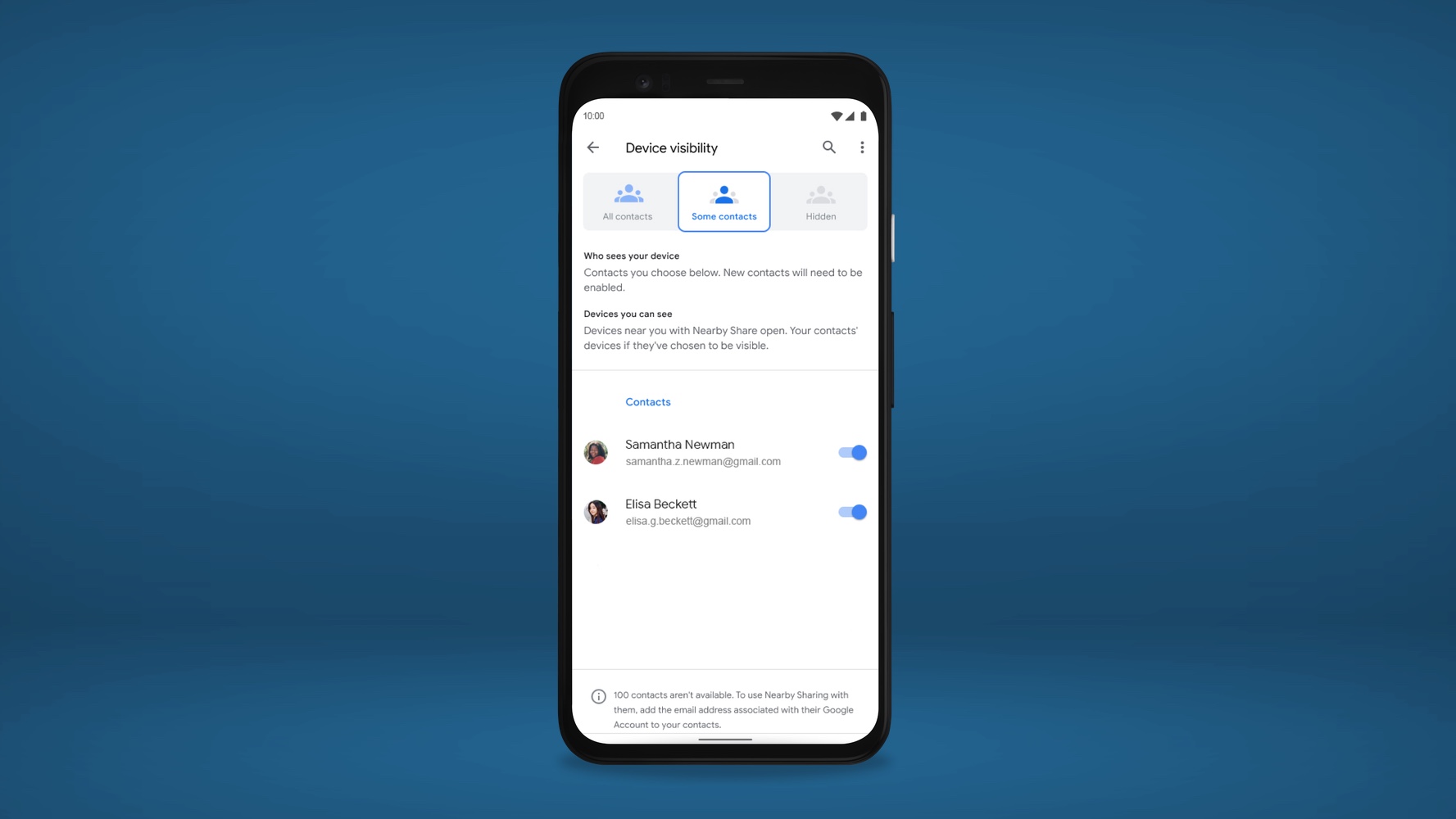Android just got one of iPhone's best features — here's how it works
Nearby Share lets you easily transfer photos and files between phones

When it comes to sharing files from your smartphone, iPhone users have had the easier time of it, thanks to Apple's AirDrop functionality. Compared to Google’s link-based cloud storage, "dropping" a photo to your MacBook from your iPhone takes just seconds.
Luckily, that's about to change with the introduction of Google's answer to AirDrop for Android users: Nearby Share. The search giant has been working on its own AirDrop-like feature for some time, and it began its official rollout yesterday (August 4).
- Best Android phones
- Get the best productivity apps for your smartphone
- Plus: Google Pixel 5 leak reveals massive 120Hz display to beat iPhone 12
Nearby Share rolls out to select Pixel and Samsung device first, with Google promising to work with other Android phone makers to “bring Nearby Share to more smartphones in the Android ecosystem over the next few weeks.” At the Samsung Unpacked event, Samsung confirmed that both the Galaxy Note 20 and Galaxy Note 20 Ultra would support Nearby Share when they arrive August 21.
When Nearby Share arrives for your phone, you'll be able to toggle Nearby Share from your Quick Settings menu by sliding your notifications menu bar down. You can turn on the ability to accept transfers from others this way, including images, links, videos, and a variety of other file types. The idea is to send data quickly, not unlike AirDrop.

When you launch Nearby Share, you can choose the option to "Turn on Nearby Share" that will offer your device name as well as profile picture with anyone nearby. You can change who sees all of this information with the "Device visibility" setting to allow only contacts access your device; you can also turn it off entirely with the "Hidden" option.
As for using Nearby Share, you'll begin seeing it as one of the default share options where you would normally email or text items. You'll need to look for the option, labeled as such, and your device will scan for "Nearby devices," then choose your contact and go.
If you're waiting to receive a file, you'll receive a notification to make yourself visible. You must accept the transfer, which will show you the file name listing first. If you accept the file, the transfer will begin and the file will open automatically. You can select to open it from your Downloads folder, or change the path where you store shared material for the future.
Get instant access to breaking news, the hottest reviews, great deals and helpful tips.
Both users must have Bluetooth and their locations enabled and will send via data, Wi-Fi only, or without internet through Bluetooth protocols.
There are some caveats to Nearby Share, though. The feature will only work with devices that are up to 1 foot away from each other, in contrast to AirDrop which can move files and photos up to 30 feet. Additionally, iOS's AirDrop already supports transfers to Macs. Currently, Nearby Share does not have a way to move shared content to computers, but Google has announced that the functionality will be coming to Chromebook "in the coming months," with two-way transfer possible. Chrome OS, however, is the only platform this will be available for.
This isn't Google's first rodeo when it comes to making attempts to match AirDrop in terms of functionality. Previously, Android Beam, which hit Android Ice Cream Sandwich nearly a decade ago in 2011, offered a way to exchange content before it was removed with Android 10. Beam required NFC to complete transfers as well as users tapping their devices together.
If you're looking to try out Nearby Share, it will be available for Android 6.0 and later.
Brittany Vincent has been covering video games and tech for over 13 years for publications including Tom's Guide, MTV, Rolling Stone, CNN, Popular Science, Playboy, IGN, GamesRadar, Polygon, Kotaku, Maxim, and more. She's also appeared as a panelist at video game conventions like PAX East and PAX West and has coordinated social media for companies like CNET. When she's not writing or gaming, she's looking for the next great visual novel in the vein of Saya no Uta. You can follow her on Twitter @MolotovCupcake.

